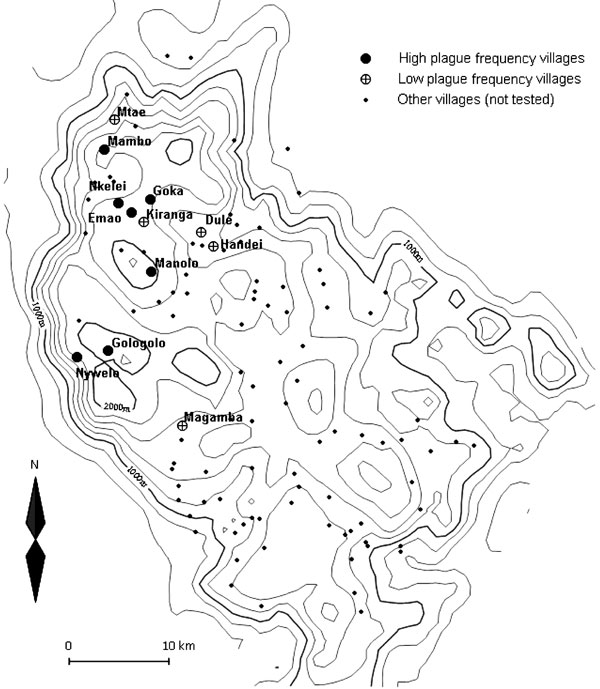Volume 13, Number 5—May 2007
Research
Plague and the Human Flea, Tanzania
Figure 1

Figure 1. Map of the Lushoto District of Tanzania showing locations of villages with high and low plague frequency villages. All other villages with known locations are also plotted. The solid lines represent altitude contours (200-m elevation lines). To the west, a steep escarpment demarcates the edge of the district.
Page created: June 23, 2010
Page updated: June 23, 2010
Page reviewed: June 23, 2010
The conclusions, findings, and opinions expressed by authors contributing to this journal do not necessarily reflect the official position of the U.S. Department of Health and Human Services, the Public Health Service, the Centers for Disease Control and Prevention, or the authors' affiliated institutions. Use of trade names is for identification only and does not imply endorsement by any of the groups named above.